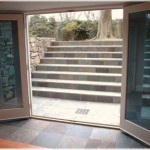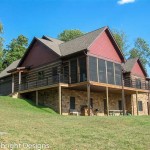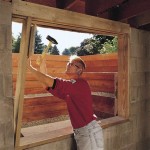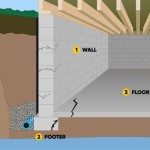Can You Finish a Basement That Has French Drains?
Finishing a basement can significantly increase a home's living space and value. However, basements, being below ground level, are susceptible to moisture issues. Many homeowners install French drains to mitigate these problems. This raises the question: can a basement with French drains be finished, and if so, what considerations are necessary?
The short answer is yes, a basement with French drains can be finished. In fact, a properly installed French drain system can make finishing a basement more feasible by reducing the risk of water damage. However, the presence of French drains introduces specific factors that must be considered during the finishing process.
Understanding French Drains and Their Role
French drains are subsurface drainage systems designed to redirect groundwater away from a structure's foundation. They consist of a perforated pipe, typically surrounded by gravel, installed in a trench. Water seeps into the gravel, enters the perforated pipe, and flows away from the foundation by gravity or with the assistance of a sump pump. This prevents water from accumulating around the foundation and seeping into the basement.
French drains are a crucial element in basement waterproofing and are especially beneficial in areas with high water tables or poor soil drainage. They play a pivotal role in preventing structural damage, mold growth, and the creation of an unhealthy living environment.
Key Considerations When Finishing a Basement with French Drains
While French drains provide a significant advantage in basement finishing, their presence requires careful planning and execution. Addressing the following considerations is crucial for a successful and long-lasting finished basement.
First, accessibility to the French drain system must be maintained. While it's desirable to conceal the system for aesthetic reasons, complete encasement should be avoided. Future maintenance or repairs may necessitate access to the pipes and gravel. Creating access panels in strategic locations allows for inspection and cleaning without major demolition.
Second, the finishing materials used should be moisture-resistant. Even with a well-functioning French drain, some humidity might persist in the basement. Using moisture-resistant drywall, flooring, and insulation helps prevent damage and mold growth. Consider using inorganic materials where possible, as these are less susceptible to moisture damage than organic materials.
Finally, proper ventilation is essential. Adequate ventilation helps regulate humidity levels and prevents the buildup of moisture. Installing a dehumidifier and ensuring proper airflow throughout the finished basement can significantly reduce the risk of moisture-related problems.
Integrating the Finishing Process with the Existing Drainage System
Finishing a basement with an existing French drain requires careful integration of the two systems. The finishing process should not compromise the drainage system’s functionality.
During framing, avoid obstructing the French drain’s path or impacting its ability to collect and redirect water. Ensure that the wall framing doesn't restrict airflow around the perimeter of the basement. This allows for proper ventilation and helps prevent moisture buildup.
When installing insulation, choose a moisture-resistant type specifically designed for basement applications. Avoid using fiberglass insulation, as it can absorb moisture and lose its effectiveness. Closed-cell spray foam insulation is a good option, as it provides both insulation and a vapor barrier.
The choice of flooring is another important consideration. Concrete floors can be sealed and painted, providing a durable and moisture-resistant surface. If installing other flooring materials like carpet or wood, ensure that a proper vapor barrier is in place to prevent moisture from seeping up from the concrete slab.
Maintaining the French Drain System Post-Finishing
After the basement is finished, regular maintenance of the French drain remains crucial. Periodic inspections should be conducted to ensure the system is functioning correctly. Access panels should be utilized to check for clogs, debris, and any signs of water accumulation.
The sump pump, if present, should be tested regularly to ensure it's operating effectively. Keeping the area around the sump pump clean and free of debris is also important. Regular maintenance helps prevent potential problems and ensures the long-term effectiveness of the French drain system, protecting the finished basement from water damage.

Can You Refinish Your Basement With An Interior French Drain Installed D Bug Waterproofing

What Is A French Drain For Basement Design Build Planners

Uummm French Drain Help Me How To Figure Out What Do When Finishing A Basement Framing Tips Youtube

Floor Drains Finished Basements Best Practices Solutions Csg Renovation

Framing Around French Drain In Basement

French Drain Products In Greater Clearfield Contractors Altoona State College Bellefonte Du Bois Saint Marys Pa

Eight Steps To Take Before Finishing Your Basement Rochester Minneapolis Fargo

Footing Drain Interior French Pros And Cons Sani Tred

French Drain Products In Greater Clearfield Contractors Altoona State College Bellefonte Du Bois Saint Marys Pa

French Drain Installation Basement Lifeguard Waterproofing
See Also








